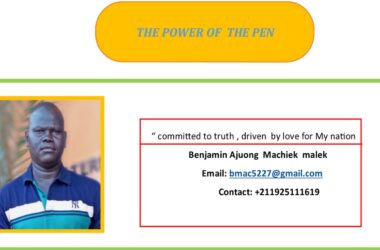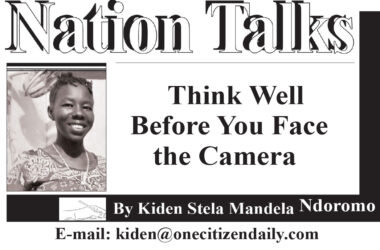By Matik Kueth
A pervasive misconception exists regarding the South Sudan People’s Defense Forces (SSPDF), often erroneously viewed as primarily a Dinka military force.
This misrepresentation not only undermines the integrity of the national army but also perpetuates divisiveness among South Sudanese citizens.
The SSPDF is recognized national army, made up of soldiers from all 64 tribes that represent the country’s diversity. Given the complicated historical and sociopolitical framework of the country, citizens must recognize that the SSPDF represents entire nation, not just one ethnic group.
The SSPDF was established as national army following the country’s independence in 2011, because of a long struggle for liberation and self-determination, replacing the name Sudan People’s Liberation Movement/Army (SPLM/A), which was given to the movement during the struggle when it was first called Anyanya. The armed forces are made up of people from various ethnic backgrounds, reflecting the rich tapestry of South Sudanese society.
However, if conflicts occur, particularly in Western Equatoria State (WES), Jonglei, and Upper Nile States, the notion that fighting is mainly between soldiers from the Dinka ethnic group and the locals can create a negative narrative. This misconception breeds hatred and heightens ethnic tensions, which is detrimental to the peaceful cohabitation required in a country still recovering from the scars of past civil conflicts.
In the backdrop of ongoing conflicts, when reports surface depicting clashes between the SSPDF and local armed youth in any area in South Sudan, many people assume that the incidents involve Dinka soldiers. Such assumptions not only distort the reality of the forces engaged but also deepen existing ethnic divides. When a community perceives that the national army is entirely made up of soldiers from a single ethnic group, hatred and resentment grow. It reframes each problem as an ethnic dispute rather than a national issue, which can set off a cycle of violence and retribution.
This is particularly alarming for a country that is still recovering from the wounds inflicted by the 2013 conflict between supporters of President Salva Kiir (predominantly Dinka) and those of Vice President Dr. Riek Machar (mainly Nuer).
It is worth noting that in various regions of South Sudan, the composition of the SSPDF is as diverse as the country itself. For instance, individuals from the Nuer community and other ethnic groups serve alongside Dinka soldiers in the SSPDF deployed in states like Warrap, Lakes and Northern Bar El Ghazal States. This reflects a significant reality: the SSPDF is representative of a multi-ethnic nation. It is a flawed concept to reduce the complexities of allegiance and service to a single tribal identity.
Conversely, in areas like Unity State, particularly in Bentiu, the SSPDF is predominantly comprised of Nuer soldiers. This diversity within the army illustrates that, contrary to the simplified narrative of ethnic identity, national service transcends tribal lines. When conflicts arise in such areas, the local community may erroneously interpret these SSPDF soldiers as mere representatives of the Dinka, leading to further misunderstandings and potential escalation of violence.
The scars of the 2013 civil war contribute to misconceptions about the SSPDF. The divisions that emerged during that erratic period are still profoundly embedded in the communal consciousness of South Sudanese people. Fear and skepticism sparked by those experiences continue to taint public perceptions of the national army. As a result, the SSPDF is perceived as a faction connected with tribal interests rather than a unifying force.
To remedy such misconceptions, South Sudanese people must work together to foster a sense of national identity that recognizes each ethnic group’s uniqueness and capabilities. Education and awareness efforts are crucial for debunking myths and stimulating community debate.
It is incumbent upon leaders, civil society organizations, and educators to promote the idea that the SSPDF represents all South Sudanese. By fostering interethnic cooperation and understanding, the potential for unity increases, diminishing the likelihood of conflict driven by misperceptions of the armed forces.
Moreover, social media and public discourse should be leveraged to challenge negative narratives around the SSPDF. Rather than fueling divisions through hate speech or reductive tribal rhetoric, the focus must shift toward highlighting the contributions of all ethnic groups to the national army. Unity in diversity should be the overarching message, allowing citizens to see their armed forces as true representatives of the entire nation, rather than as affiliates of any single tribe.
So, it is imperative for the people of South Sudan to move beyond the narrow ethnic interpretations of the SSPDF. The SSPDF encompasses a diverse array of individuals who represent the rich tapestry of South Sudan’s demographic makeup.




